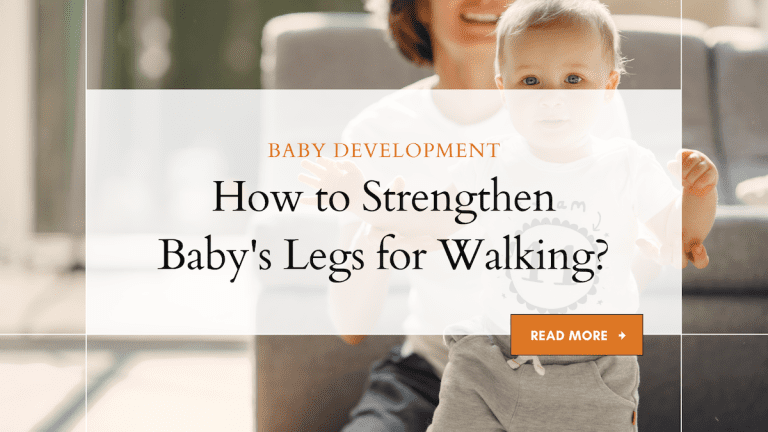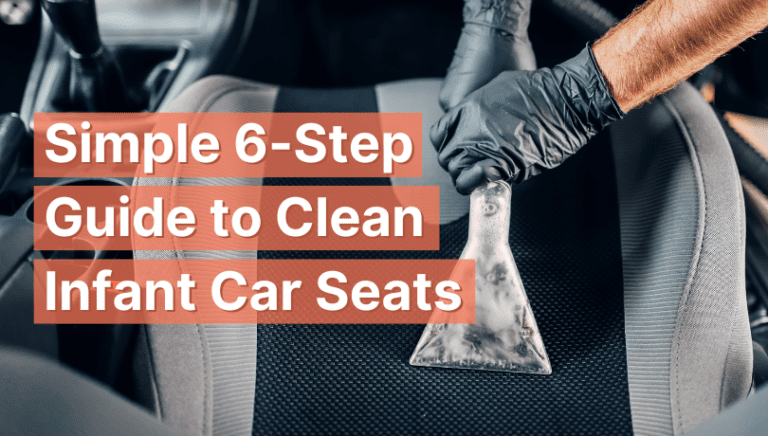Know How to Swaddle a Newborn: 2 Popular Techniques
While I only swaddled my babies occasionally, it did help my children sleep better and for longer. Newborn babies also look so adorably peaceful when they are swaddled correctly. Not to mention that it’s the perfect opportunity to take a little nap yourself!
There are many parents (from all over the world, in fact) who prefer swaddling since it creates a warm space similar to that of the womb, and keeps your baby wrapped up snug and safe.
Moreover, it helps reduce the startle reflex, and improves sleep quality and duration too.
So, let’s look at how to swaddle a newborn safely and properly. I’ll provide step-by-step instructions on different techniques, answer FAQs, and list out more resources that personally helped me on my swaddling journey.

Table of Contents
Know About Different Swaddling Techniques
You can choose from multiple swaddling techniques depending on if your baby breaks out of the swaddle frequently or if they simply need warm comfort:

This type of swaddling is great for newborns who are likely to wake up from the startle reflex and, instead, prefer that snug, womb-like effect (even better if this is the position they preferred in the womb).
- Resembles the safe, tight space in the womb.
- Their limbs are secured snugly to prevent wake-ups from the startle reflex.
- If your newborn is already exploring hand movements, restricting their arms with this type of swaddling can cause discomfort.
Swaddling with a double blanket is great for babies who break out of swaddles but also have trouble sleeping soundly.
- Helps prevent your newborn from breaking out of the swaddle and provides one more layer of protection.
- Useful if your newborn is already strong but is not yet rolling over.
- If you live in warm or humid environments, double swaddles can cause overheating and similar issues.
- Double swaddling requires extra caution and must be done the right way; otherwise, it can hold your baby back from learning crucial motor skills and progressing with their development.
This type of swaddling leaves your newborn’s arms free and is less restrictive than other swaddling techniques (works better if your baby had their arms up in the womb as well).
- Leaves your newborn free to wiggle their arms and helps them self-soothe faster.
- It reduces the risk of your baby rolling onto their tummy and getting stuck there.
- This technique is also helpful if you are attempting to transition your baby out of the swaddle.
- This technique may not help if your baby is sensitive to the startle reflex and wakes up crying or fussing.
- Your baby may also break out of this swaddle if they are already strong.
Kelleigh’s Note on Swaddling with the Head Covered
I have had parents ask me how to swaddle a newborn with the head covered. While this technique exists, I, personally, do not prefer it since it poses many risks:
- can cause overheating and restricts airflow,
- increases the risk of suffocation (the swaddling cloth may come loose and restrict your baby’s breathing)
But, I also understand that it’s necessary to protect your baby’s head, especially from fluctuating cold temperatures. So, instead of swaddling them with their head covered, opt for cute little beanie caps or hats!
How to Swaddle a Baby: The Traditional Swaddle in 6 Steps

Psst! You can check out the Additional Resources section to see the videos I’d recommend for swaddling.
How to Swaddle a Baby: Arms-Up Swaddle in 6 Steps

P.S. Check out the Additional Resources section for a video on how to do the double swaddle!
Dear parents, please know that swaddling isn’t a necessity. You can consider swaddling if your baby has trouble sleeping at night and wakes up fussing. But if your baby is a sound-sleeper, you have no need for a swaddle. Plus, it’s one less thing to transition them out of eventually!
If you’re on the lookout for another safe, hands-free way to carry your baby, be sure to check out my article on the best baby carriers for comfort and support.
General Guidelines for Safe Swaddling
When you’re swaddling a newborn, there are 3 things you’ll need to keep in mind:

1. Placement and Position
- Remember to position your baby safely, placing them on their back.
- Also, please do not use any thick, non-swaddling blankets to swaddle your baby. This can cause overheating or suffocation issues if you are not careful.
2. Folding and Fastening
When you’re folding, first swaddle their arms, and then move on to securing their hips and feet.
If you’re using the traditional or double swaddling technique –
- ensure that their arms are folded and swaddled slightly below their chest, and
- join the bottom portion of the cloth upwards from their feet to meet the top fold.

3. Checking for a Snug Fit
In my blog on signs of swaddling too tight, I talk about how you can do a quick check to verify if your swaddling is a snug, tight, or a loose fit. Here’s a short summary of that:
- After swaddling, ensure that there’s only a two-finger gap from their chest to the blanket. The swaddling is incorrect if the gap is more or less.
- This ensures that your newborn has enough room to bend their legs upwards and hips outward without it being too loose or restrictive.
FAQs on Swaddling a Baby Safely

1. How Long to Swaddle a Baby?
It is recommended that you stop swaddling your newborn either
1. after they turn two months old, or
2. if they begin attempting rollovers.
Further Reading: When to Stop Swaddling Baby?
2. What are the Disadvantages of Swaddling a Baby?
1. When you swaddle your baby incorrectly or too tight, and it happens frequently, it may impact your baby’s motor development, causing issues like hip dysplasia and more, over time.
2. If your baby gets too dependent on the swaddle, it can be difficult for them to adjust to sleeping bare in their crib. This, in turn, can increase fussiness, causing stress for the parents too.
3. Should I Swaddle My Baby at Night?
Yes, you can, particularly if your baby struggles to sleep soundly during bedtime.
Just ensure you swaddle them correctly and monitor them when you can. Make sure you allow them enough room to wiggle their limbs and hips, while also ensuring that it’s snug enough to keep them safe.
Moreover, please take care to stop swaddling if you see signs of your baby rolling over or if they turn older than 2 months old (which is typically the time they begin rollovers).
4. How Do I Know If I’m Swaddling Too Tight?
Check for tightness in the chest and at the hips and arms. Please ensure you leave only a two-finger gap (no more or less) between the blanket and their chest.
Also, the swaddle may be too tight if your baby persistently resists the swaddle or cries only when you put them in the swaddle. They are just not comfortable, and they are letting you know.
5. Why Does My Baby Hate the Swaddle?
Your baby might find the swaddle too tight, too stuffy, or too restrictive.
Swaddling is usually a hit or miss with most newborns, so don’t be discouraged if your baby dislikes it.
One of the best ways to get your baby sleeping soundly is to have a consistent bedtime routine. You can also try co-sleepers or bassinets to help them sleep better.
6. What’s the Best Way to Swaddle Newborns?
If your baby does not move around too much and just needs a little comfort at night, you can consider the traditional swaddle.
If your baby tends to break out of the swaddle frequently, try the double swaddle or arms-up swaddle, depending on how old your newborn is.
If your baby tends to scratch their face with their fingernails, try the traditional or double swaddle.
Final Thoughts on How to Swaddle Newborns Safely
There are many techniques to swaddle a newborn, including the traditional swaddle, arms-up swaddle, double swaddle, and more. It’s crucial to learn the technique and swaddle correctly to prevent issues like hip dysplasia, or SIDS.
I’ve covered detailed steps on how to swaddle a baby using the traditional technique and the arms-up method. I’ve also provided more resources below to help you do it the right way.
Finally, please remember to choose a swaddling blanket that is made of breathable fabric like muslin, flannel, cotton, etc., to prevent overheating issues.
Additional Resources
1. Traditional Swaddling
Here’s a helpful video from the UPMC Women’s Hospital YouTube channel to give you a clearer idea of how to swaddle using the traditional method:
2. Arms-Up Swaddling
Lauren from Enso Prenatal’s YouTube channel has a video where she slowly and clearly explains the process of arms-up swaddling:
3. Double Swaddle
Here’s an informative video from the ModaMob YouTube channel on how to double swaddle using one regular swaddle and one Russian swaddle:






